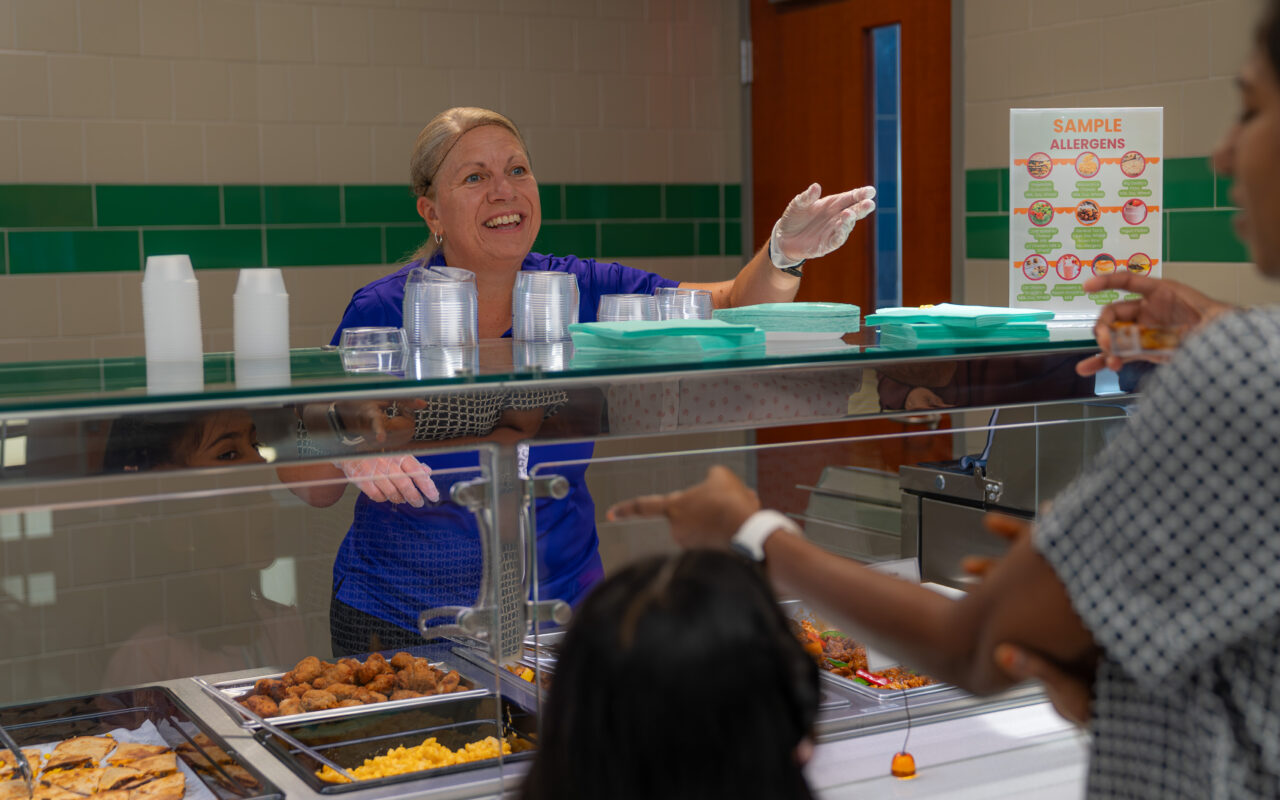Does Food Bank assistance boost the economy? Researchers find intriguing results
August 4, 2025
There’s no question that food banks offer a crucial service to people dealing with poverty or unexpected life circumstances. But do they actually help the local economy as well?
It’s very difficult to answer that question with a precise dollar figure, partly because surprisingly few researchers have even looked into it. But those familiar with the work of food banks can point to multiple ways that food assistance helps workers and their families, including the children who will grow up to make their own contributions to the economy. In addition, the research that has been done has uncovered evidence that food assistance may in fact have very positive economic ripple effects.
“You’re providing households that (will) utilize those services an opportunity to reallocate those funds toward other goods and services within our local economy, which as you can imagine, will go a long way for the main streets of cities like Dover and Newark,” says Michael Casson, dean of the College of Business at Delaware State University, who has a doctorate in agricultural and resource economics.
Here are some intriguing findings:
Ripple effects in the millions of dollars
In one of the only studies of its kind, Western Washington University developed a data analysis model in 2017 for two food banks in a rural Washington county. Researchers estimated that the food banks contributed between $1.3 million and $3 million in direct spending each year to the local economy. They were cautious about the exact numbers but said they were a reasonable estimate of the impact these food banks had. The food assistance also indirectly added between a dozen and several dozen jobs, the data suggested.
“We tried to be really, really conservative all the way through,” says James McCafferty, co-director of the Center for Economic and Business Research at WWU. “But the numbers are astounding. It’s stunning, really.”
Their economic impact model takes into account all kinds of factors, especially tax breaks that businesses receive for food donations, which create new economic activity, McCafferty points out. They also used census-based data to factor in the impact on household budgets, which frees up money for people to spend on healthcare and rent, he says.
Economists who have reviewed the study have been positive about the reliability of the model, McCafferty says.
“There’s all sorts of ripples and levers and multipliers,” Hart Hodges, co-director of the Center for Economic and Business Research, told the university’s Window magazine. “Literally tons of food that was going to go to a landfill, instead goes to allowing more spending in a community. That’s a heck of a switch.”
That doesn’t mean that other parts of the country would see the same numbers: This study was very specific to one area. But it’s evidence of the kind of solid economic benefit that might be found with further study.
Value where it counts
Researchers at Cornell University and the USDA took a different approach, not plumbing so far into the ripple effects, but simply trying to put a dollar figure on the value of food banks to individual families.
You might think that economists could simply add up dollar amounts for the value of donated food and tally an exact figure, but it’s much more complicated than that because of a variety of factors, including fluctuating food prices.
However, these researchers had access to a wealth of data from a Colorado food bank over more than a decade. Using a common economic model to analyze the cost of travel to this food bank, they were able to estimate the value families placed on the service. Their results, published in 2022, found the value of food assistance nationwide is likely in the billions of dollars each year.
They reported that households they studied saw a benefit of between $600 and $1,000 per year from their visits to food banks. In households living close to the line and possibly struggling to find enough money for emergency expenses, this kind of sum can make a big difference, they noted.
And like the WWU study, this one is likely conservative.
“We’re getting an underestimate of how much value they’re placing on it,” says Cornell’s David Just, a professor of behavioral economics and one of the study’s authors. He notes that users of food banks sometimes describe responding dramatically to changes of only $20 to $30 a month in SNAP benefits. “So $600 is something very substantial to them.”
Applying their local figure to national statistics, the researchers then estimated that in 2014 alone, food pantry clients nationwide received somewhere around $15.6 billion to $23.3 billion in value. Given the increase in pantry usage, they said, that might have increased to around $19 billion to $28 billion by 2020 — “a sizable share of the food landscape.”
These numbers are very tentative, as they are extrapolated out from one small part of the country. However, Just thinks it provides a sense of the large impact of food banks.
“It’s providing an essential service that makes a huge difference in many of these households,” he says.
It’s almost certain that this money added to households has an economic ripple effect, he says, even though the specific amount of money is not easy to parse out.
The multiplier effects
These studies suggest that adding money directly to the economy and to household budgets is one likely impact of food banks. But other benefits can also ripple into local communities, notes Delaware State University’s Casson.
For starters, the food bank’s assistance allows other nonprofits and community organizations to focus on their core mission and make an even bigger impact than they would otherwise, including in ways that eventually benefit the economy, Casson says.
For example, he leads a nonprofit called DEMCO, which seeks to build up local communities through initiatives like mentoring, promoting academic achievement, and countering substance abuse. Casson is very grateful for their ability to work with the Food Bank of Delaware.
“We leverage the Food Bank partnership to provide … the nutrition needed during the course of many of our programs, and that allows us to then provide additional resources,” he says.
School performance is another indirect economic factor. Research has found evidence that low food security may have a negative effect on academic achievement. How kids do in school can then affect their career prospects.
“It’s a vicious cycle,” Casson says. “Once you’re not achieving in school academically … you’re not afforded the same career opportunities, and so now you find yourself in a low income sector of the economy, and now the cycle just perpetuates.”
To address this, the Food Bank of Delaware partners with schools around the state to provide food directly to students.
The Food Bank’s workforce development and training programs also relate to economic success. These give employees the skills to get jobs, to keep them, and to be more productive.
The Food Bank, Casson points out, also sustains jobs in its own organization. “So you have both direct and indirect impact as a result.”
When it comes to the ways food banks boost the economy, plenty of territory remains for enterprising young economists to explore. But common sense and careful academic research both indicate that food bank assistance could have significant effects even beyond helping families in a pinch.





Comments are closed here.